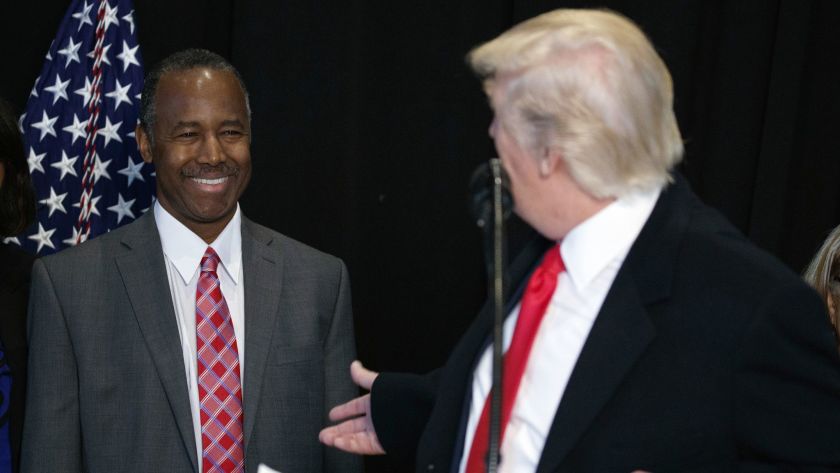The Trump administration will explore using federal programs to push local governments to soften or eliminate rules that block housing construction, an issue that has stymied officials at all levels of government for years.

President Trump is expected to sign an order Tuesday creating the White House Council on Eliminating Barriers to Affordable Housing Development, which will include members of eight federal agencies.
“These are things that can be solved. A lot of [these rules] have been on the books for excessive amounts of time. They’re not particularly relevant any more,” said Ben Carson, secretary of the U.S. Department of Housing and Urban Development, in an interview Tuesday with The Wall Street Journal.
Home construction per household is near the lowest level in 60 years of record-keeping, creating a shortage of everything from starter homes for young households to rental apartments for retirees on fixed incomes.
A study released Tuesday by Harvard University’s Joint Center for Housing Studies found that the U.S. built about 260,000 fewer homes than it needed in 2018 to keep up with population growth and an aging housing stock.
As a result, homes are getting more expensive relative to incomes. The ratio of the median home price to median household income rose from a low of 3.3 in 2011 to 4.1 in 2018, according to Harvard.
The ratio hit its peak of 4.7 in 2005 when loose lending stoked demand, causing prices to soar. This time the index is rising more due to supply shortages, the Harvard report said.
Local zoning and land-use regulations have swelled since the 1970s and cannot be eliminated in one stroke of a pen by the federal government. Expensive U.S. cities and suburbs in California and the Northeast have long been difficult places to build. But housing shortages have grown widespread in recent years, extending from Grand Rapids, Mich., to Austin, Texas.
The Obama administration produced a tool kit in September 2016 that was designed to help local governments pare back zoning regulations, to little effect.
Local regulations that require developers to address such issues as environmental protection and road, school and sewer capacity often have strong support among residents and politically powerful advocacy groups. Also, many municipalities stepped up land-use regulation following the housing bust in 2008, when developers overbuilt leaving hundreds of unfilled homes that decimated home prices and created blight in many communities.
The new Trump council will produce a study quantifying the effect of regulations on the housing market and the U.S. economy as a whole. Its members will include representatives of the Treasury Department, the Labor Department, the Environmental Protection Agency and the Agriculture Department, which will also examine ways to roll back federal regulations inhibiting housing development.
Mr. Carson has made easing barriers for the private sector to build housing the signature issue of his tenure as HUD secretary. He has toured a factory that uses a 3-D printer to build homes faster and cheaper and most recently hosted an event that showcased affordably priced manufactured homes on the National Mall.
Critics say the HUD secretary is focusing attention on local governments and the private sector while neglecting his agency’s responsibility to enforce the Fair Housing Act, which forbids practices such as concentrating affordable housing in poorer areas.
Mr. Carson said the housing shortage creates de facto segregation.
“The thing that creates segregation is not George Wallace-type people standing at the door saying you can’t come in here,” he said. “It’s cost. People tend to congregate in places that they can afford to live.”
https://www.realtor.com/news/real-estate-news/trump-administration-to-take-on-local-housing-barriers/
